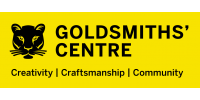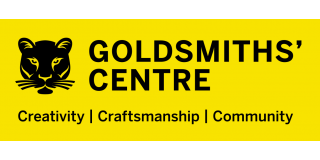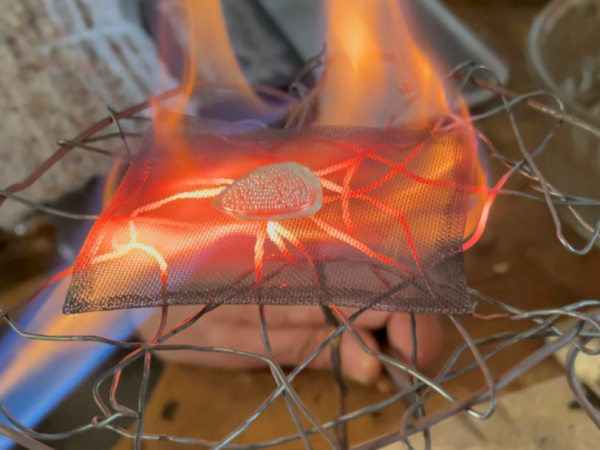Granulation Technique with Linda Lewin, Thu19, Fri 20 and Sat 21 March 2026, 9.30am - 4.30pm, £629 (8 places)
Granulation is the oldest decorative metalwork technique known to mankind. Tiny grains or spheres of precious metal appear to be held by magic to the metal’s surface without using solid attachments or even solder. Light reflecting from the granules imbues the work with a power which transcends time and scale. The Etruscans are the acknowledged masters of the granulation process and to this day their exquisite work can still be admired in many museums around the world.
Each small granule can be built up naturally into complex three-dimensional forms that dramatically catch the light particularly in 22ct Gold. Join artist-jeweller Linda Lewin who will reveal how to achieve this decorative technique in your own jewellery designs.
Granulation is an ideal technique for studio jewellers who enjoy working directly with their materials to create unique works of art. Linda will show you how to apply this ancient technique to contemporary jewellery by developing essential observational and hand skills through practice and the completion of samples
There will be an optional opportunity to visit the British Museum on Friday 20 March after the course at 4pm. For course participants who wish to join, the group will depart together from the Goldsmiths’ Centre and travel to the British Museum by public transport. Linda will lead the group at the museum, exploring inspiring historical pieces which incorporate the ancient technique of granulation.
Our small class size offers you the chance to get group tuition as well as individual guidance on a 1:1 basis with your tutor, allowing you to receive tailored advice to deepen your knowledge and understanding of the ancient technique of granulation.
What does this course cover?
- History of the Skill and Integration with Other Techniques: An overview of the history and techniques of granulation in the ancient world and in contemporary work. This includes making as well as exploring the advantage and disadvantages of chemical soldering and alloy soldering and how granulation works in partnership with other techniques such as loop-in-loop chain making.
- Hands-On Examination: Discussion and analysis of the tutor’s personal collection of samples in silver and gold.
- Practical Demonstration: Graded exercises to make granules and fix them in position using coppers salts and copper plating techniques.
- Finishing Techniques: Discussion and practice of finishing techniques.
- Personal Projects: Opportunity to design and make your own unique piece of granulation as a finished piece or to be incorporated in a finished piece independently.
- Studio Practice Integration: Consideration of how the technique of granulation can be incorporated into and complement your personal studio practice.
By the end of the course, you will have gained:
- ·Practical Skills: You will practice basic skills including wire drawing, annealing and rolling and learn to make granules in controlled sizes and apply them to three-dimensional shapes using the copper plating technique.
- Understanding of Techniques: Gain a broad understanding of the way in which heat, mass and design fundamentally affect and complement each other within the process of granulation.
- Metallurgy Knowledge: Improve your comprehension of how metallurgy and heat techniques can affect your practice through the process of soldering in different silver and gold alloys.
- Sample Collection: Create a collection of silver and/or gold* samples showing different methods to make granules and attach them to a three-dimensional form.
- Finished Work: Complete a piece of granulation jewellery, such as a small pendant, or a granulation element ready to be incorporated into future finished work.
What do I need to bring with me?
- Basic tool kit including saw frame, saw blades, hand file (1/2 round or flat cut 2)
- Fine pointed tweezers
- Snips, pointed nail scissors
- Loupe/magnifier
- Small mandrel/darning needles, fine knitting needle to make jump rings
- Double handed pin vice
- Set of jeweller’s pliers
- Set of needle files for general purpose
- Scribe
- Optional - Students are welcome to bring their own gold (recommended 5g minimum of sheet or wire (18ct or 22ct gold).
What will I be provided with?
- A student starter pack for granulation.
- All metal*(Britannia Silver) needed to produce work and sample – please refer to the note above about the option to bring your own gold if you wish to do so.
- Technical notes. Participants should supplement the notes with their own observations.
Who is this course designed for?
- Beginner: Limited prior experience required.
Participants at the beginner level should have a basic understanding of workshop practices and some exposure to handling tools and materials. This level is ideal for those who may have minimal practical experience but are looking to expand their knowledge and skills. The course will focus on building confidence in using essential tools and techniques, such as piercing, filing, and basic soldering, while reinforcing key workshop procedures like safety, measuring, and assembly. Instruction will guide participants through fundamental tasks, emphasizing accuracy and good habits as they develop the ability to work more independently.
- Intermediate: Practical experience and understanding of listed skills required.
Participants at the intermediate level should have prior experience in a workshop environment and the ability to work independently on fundamental tasks. They should be comfortable with processes such as piercing, filing, and soldering, and possess a working knowledge of workshop tools and techniques. This level focuses on refining basic skills, introducing more complex tasks, and developing the ability to troubleshoot and work with greater precision and autonomy.
Can I receive financial support to access this course?
We believe that talent should not be held back. Here at the Goldsmiths’ Centre, we are open, accessible and inclusive to all. Our Access Grants help anyone to build thriving creative careers, supporting jewellers, silversmiths and allied industry practitioners to access our training courses for free.
If you need help to cover fees for our business and technical skills short courses, please apply for one of our Access Grants. To find out more and read our application criteria, click here
The Access Grants are delivered by the Goldsmiths' Centre and funded through modern philanthropic giving, via the Goldsmiths’ Foundation, from members of the Goldsmiths’ Company.
*Note: In the interest of keeping the course price low, the materials provided do not include 22ct. gold, you will be working with Britannia Silver. You are invited to buy your own gold, once you have discussed your requirement with your tutor to confirm size and quantity required for your own project. 22ct. gold can be purchased from Cookson Gold located in Hatton Garden, a stone’s throw from the Goldsmiths’ Centre.
Who is the tutor?
Linda Lewin is an artist-jeweller, based in the Scottish borders. Linda trained in Sheffield and has more than forty years’ experience making commission work, exhibiting with galleries and teaching students from her studio. She studied ancient jewellery techniques including chain making and granulation in 22ct. Gold, in New York in 2000. This experience changed the way she approaches her work with metal, feeling empowered to be part of a continuing jewellery making tradition going back thousands of years. Linda sees, Granulation as a way of holding hands with our ancestors
Ticket options
Granulation is the oldest decorative metalwork technique known to mankind. Tiny grains or spheres of precious metal appear to be held by magic to the metal’s surface without using solid attachments or even solder. Light reflecting from the granules imbues the work with a power which transcends time and scale. The Etruscans are the acknowledged masters of the granulation process and to this day their exquisite work can still be admired in many museums around the world.
Each small granule can be built up naturally into complex three-dimensional forms that dramatically catch the light particularly in 22ct Gold. Join artist-jeweller Linda Lewin who will reveal how to achieve this decorative technique in your own jewellery designs.
Granulation is an ideal technique for studio jewellers who enjoy working directly with their materials to create unique works of art. Linda will show you how to apply this ancient technique to contemporary jewellery by developing essential observational and hand skills through practice and the completion of samples
There will be an optional opportunity to visit the British Museum on Friday 20 March after the course at 4pm. For course participants who wish to join, the group will depart together from the Goldsmiths’ Centre and travel to the British Museum by public transport. Linda will lead the group at the museum, exploring inspiring historical pieces which incorporate the ancient technique of granulation.
Our small class size offers you the chance to get group tuition as well as individual guidance on a 1:1 basis with your tutor, allowing you to receive tailored advice to deepen your knowledge and understanding of the ancient technique of granulation.
What does this course cover?
- History of the Skill and Integration with Other Techniques: An overview of the history and techniques of granulation in the ancient world and in contemporary work. This includes making as well as exploring the advantage and disadvantages of chemical soldering and alloy soldering and how granulation works in partnership with other techniques such as loop-in-loop chain making.
- Hands-On Examination: Discussion and analysis of the tutor’s personal collection of samples in silver and gold.
- Practical Demonstration: Graded exercises to make granules and fix them in position using coppers salts and copper plating techniques.
- Finishing Techniques: Discussion and practice of finishing techniques.
- Personal Projects: Opportunity to design and make your own unique piece of granulation as a finished piece or to be incorporated in a finished piece independently.
- Studio Practice Integration: Consideration of how the technique of granulation can be incorporated into and complement your personal studio practice.
By the end of the course, you will have gained:
- ·Practical Skills: You will practice basic skills including wire drawing, annealing and rolling and learn to make granules in controlled sizes and apply them to three-dimensional shapes using the copper plating technique.
- Understanding of Techniques: Gain a broad understanding of the way in which heat, mass and design fundamentally affect and complement each other within the process of granulation.
- Metallurgy Knowledge: Improve your comprehension of how metallurgy and heat techniques can affect your practice through the process of soldering in different silver and gold alloys.
- Sample Collection: Create a collection of silver and/or gold* samples showing different methods to make granules and attach them to a three-dimensional form.
- Finished Work: Complete a piece of granulation jewellery, such as a small pendant, or a granulation element ready to be incorporated into future finished work.
What do I need to bring with me?
- Basic tool kit including saw frame, saw blades, hand file (1/2 round or flat cut 2)
- Fine pointed tweezers
- Snips, pointed nail scissors
- Loupe/magnifier
- Small mandrel/darning needles, fine knitting needle to make jump rings
- Double handed pin vice
- Set of jeweller’s pliers
- Set of needle files for general purpose
- Scribe
- Optional - Students are welcome to bring their own gold (recommended 5g minimum of sheet or wire (18ct or 22ct gold).
What will I be provided with?
- A student starter pack for granulation.
- All metal*(Britannia Silver) needed to produce work and sample – please refer to the note above about the option to bring your own gold if you wish to do so.
- Technical notes. Participants should supplement the notes with their own observations.
Who is this course designed for?
- Beginner: Limited prior experience required.
Participants at the beginner level should have a basic understanding of workshop practices and some exposure to handling tools and materials. This level is ideal for those who may have minimal practical experience but are looking to expand their knowledge and skills. The course will focus on building confidence in using essential tools and techniques, such as piercing, filing, and basic soldering, while reinforcing key workshop procedures like safety, measuring, and assembly. Instruction will guide participants through fundamental tasks, emphasizing accuracy and good habits as they develop the ability to work more independently.
- Intermediate: Practical experience and understanding of listed skills required.
Participants at the intermediate level should have prior experience in a workshop environment and the ability to work independently on fundamental tasks. They should be comfortable with processes such as piercing, filing, and soldering, and possess a working knowledge of workshop tools and techniques. This level focuses on refining basic skills, introducing more complex tasks, and developing the ability to troubleshoot and work with greater precision and autonomy.
Can I receive financial support to access this course?
We believe that talent should not be held back. Here at the Goldsmiths’ Centre, we are open, accessible and inclusive to all. Our Access Grants help anyone to build thriving creative careers, supporting jewellers, silversmiths and allied industry practitioners to access our training courses for free.
If you need help to cover fees for our business and technical skills short courses, please apply for one of our Access Grants. To find out more and read our application criteria, click here
The Access Grants are delivered by the Goldsmiths' Centre and funded through modern philanthropic giving, via the Goldsmiths’ Foundation, from members of the Goldsmiths’ Company.
*Note: In the interest of keeping the course price low, the materials provided do not include 22ct. gold, you will be working with Britannia Silver. You are invited to buy your own gold, once you have discussed your requirement with your tutor to confirm size and quantity required for your own project. 22ct. gold can be purchased from Cookson Gold located in Hatton Garden, a stone’s throw from the Goldsmiths’ Centre.
Who is the tutor?
Linda Lewin is an artist-jeweller, based in the Scottish borders. Linda trained in Sheffield and has more than forty years’ experience making commission work, exhibiting with galleries and teaching students from her studio. She studied ancient jewellery techniques including chain making and granulation in 22ct. Gold, in New York in 2000. This experience changed the way she approaches her work with metal, feeling empowered to be part of a continuing jewellery making tradition going back thousands of years. Linda sees, Granulation as a way of holding hands with our ancestors


